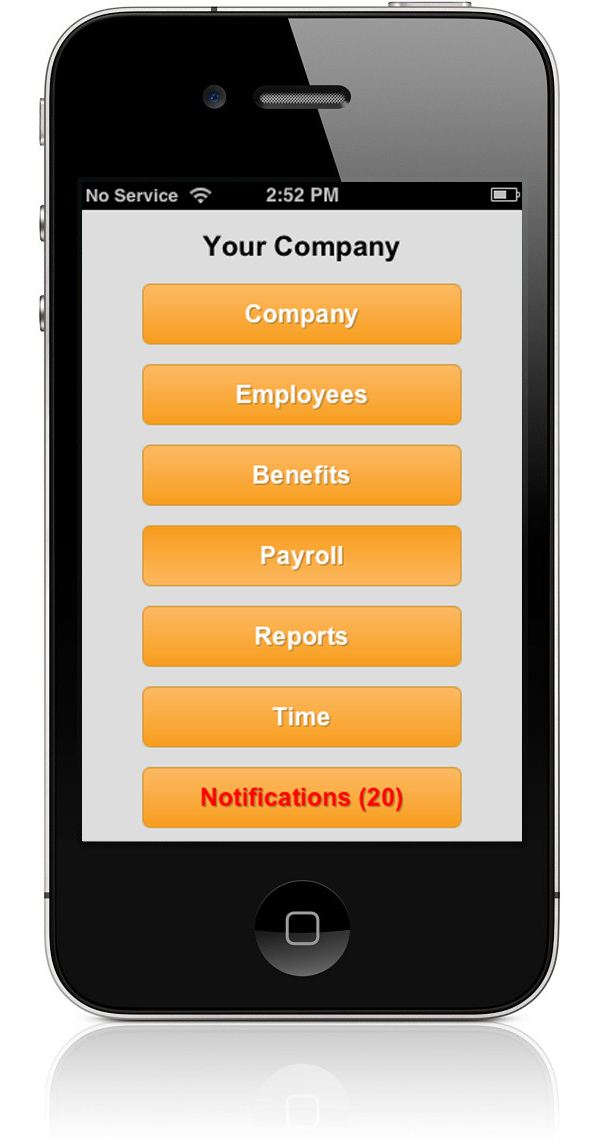HR for SMB: Innovative, cloud-based and 100 percent mobile

I have been speaking lately to lots of smaller companies that are finding their way on to cloud infrastructures; the genesis for most companies moving to cloud is easy access and low cost entries to market. While cloud offerings continue to mature, there is a gold rush of sorts to publish applications to mobile platforms.
IDC recently published some interesting statistics on the mobile market. IDC reported that 92.3 percent of the market was owned by Android and iPhone. While statistics vary a little from article to article, it is not by much, with most agreeing that Android and iPhone lead, Microsoft is making gains, while BlackBerry continues to fail to gain solid footing.
I have also been speaking to many who are hell bent on innovating through the migration of traditional business processes to a mobile platform. Taking a process like Quote to Cash, which integrates and automates the integration of end-to-end business processes on a businesses sell side; including pricing, the creation of a quote, order management, invoicing, and receipt.
Recently I spoke to Sam Candido, chief operating officer, and Martin Gertler, chief marketing officer, of FutuHR, a new company which has taken the processes associated with Human Resources (HR), moved them to the cloud, and presented them for their clients on a mobile platform.

Traditionally, when we think of HR, we think of a large system of interconnected technologies and vendors. This is not that. There are no connections to an enterprise system.
FutuHR is the antithesis of enterprise software.
FutuHR was built for small to midsize companies who have never had the ability to afford a system that can do so much in the HR realm. And, unlike all of the enterprise systems out there, it requires no license, has no contract, requires no implementation or configuration, and needs no training.
“The very definition of ‘turn key’ and a natural for the cloud”, according to Gertler.
FutuHR plays to two markets, according to Candido: smaller companies (under 50 people) that don’t have an HR system and that are probably using spreadsheets and filing cabinets to house all of their HR information (or who might have a rudimentary HR system that they pay extra for through their payroll company); and larger companies (sub-150) looking for a robust and less expensive alternative -- particularly those with mobile workforces.
So far, the early adopters of FutuHR seem to be channels that recognize its value and have the ability to expose it to their customer bases. In fact, they’re in the process of signing channels right now -- think payroll companies, PEOs like a Trinet.
These are companies that handle the HR benefits payroll etc. for companies on an outsourced basis. And it is a huge business!
What’s a PEO? According to NAPEO, professional employer organizations (PEOs) enable clients to cost-effectively outsource the management of human resources, employee benefits, payroll and workers' compensation. PEO clients focus on their core competencies to maintain and grow their bottom line.
"The response from these "‘aggregators" has been amazing because they understand the value of this sort of business model, and its ability to enhance their own connections with customers by offering something that has never before been available", according to Gertler.
Gertler reported from the SHRM (Society for Human Resourcing) national conference and said that all of the big HR companies are focusing on mobile. But two important aspects stuck with him:
- "First, ALL of them [companies presenting at the show] were presenting a mobile front end to an installed system. So you could take HR on the road but you needed to already be a user of that system. Small business can’t afford to install ADP, Kenexa, Workday let alone handle the implementation costs or monthly maintenance costs."
- "Second, almost nobody was focusing on the smaller business market."
Innovation, we know from Clayton Christensen (author of the Innovator’s Dilemma), takes an existing technology, keeps it simple, and applies it to existing processes or needs. This is precisely what Gertler and Candido have been able to do with FutuHR. It will be interesting to see them gain momentum.
Let me know what you think!